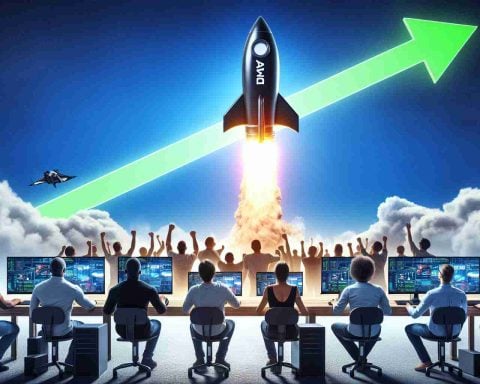As Huawei navigates the complex landscape of advanced chip manufacturing, its innovative customer service approach is proving vital for maintaining competitive edge against established players like Nvidia. The company is focusing on enhancing collaboration with clients by utilizing their customer service strengths, which is expected to help them adapt their technology and usage patterns over time.
Current trade restrictions are also playing a role in Huawei’s strategy. These export controls limit Nvidia’s access to the Chinese market, thereby creating an opening for Huawei to assert its presence and offer alternative products.
To bolster its product adoption, Huawei has been proactive in sending technical teams to help clients transition their existing programming to Huawei’s platforms, demonstrating a commitment to customer support and product integration.
However, the road is not without obstacles. Industry experts cite lower-than-expected production yields for Huawei’s chips, particularly those intended to replace Nvidia products, as a significant hurdle. This situation poses challenges in making advanced chip manufacturing economically viable.
Despite these challenges, Huawei is not standing still. Recent reports indicate that the company is on the verge of launching a new AI chip, the Ascend 910C, aimed at competing directly with Nvidia’s offerings in the Chinese market. Huawei’s efforts reflect a resilient push to enhance its market position amid ongoing geopolitical tensions.
Huawei’s Strides in AI Chip Development amidst various challenges highlight a significant shift in the technology landscape, especially in the context of China’s growing ambitions in semiconductor technology.
Additional Relevant Facts:
Huawei has been investing heavily in research and development for AI chips, with projections showing that the global AI semiconductor market is expected to reach over $70 billion by 2028. The rise of AI technology is propelling demand for high-performance chips that can handle complex algorithms and large datasets. Additionally, Huawei’s development of its native software ecosystem, HarmonyOS, is aimed at fostering resilience in its chip offerings by ensuring compatibility across devices and platforms.
Key Questions and Answers:
1. What advantages does Huawei have in its AI chip development?
– Huawei benefits from its extensive experience in telecommunications and consumer electronics. Its ability to leverage existing technologies and integrate AI solutions into its broad range of products, from smartphones to cloud services, provides a competitive edge.
2. What are the primary challenges Huawei faces in the semiconductor industry?
– Apart from lower-than-expected chip yields, Huawei faces significant challenges including ongoing trade sanctions from the U.S., competition from both established brands like Nvidia and rising Chinese firms, and the rapid pace of technological advancement necessitating ongoing investment.
3. What role do geopolitics play in Huawei’s strategy?
– Geopolitical tensions, particularly between the U.S. and China, create both challenges and opportunities for Huawei. While sanctions limit access to certain technologies, they also reduce competition from companies like Nvidia in specific markets, allowing Huawei to strengthen its position domestically.
Advantages of Huawei’s AI Chip Development:
– Local Market Focus: By focusing on the Chinese market, Huawei can tailor its products to meet local needs and preferences more effectively.
– Integration of Services: Huawei’s offerings encompass both hardware and software, enabling seamless integration and potentially enhancing user experiences.
– Government Support: Being a major player in China, Huawei benefits from favorable government policies aimed at promoting local technology advancements.
Disadvantages of Huawei’s AI Chip Development:
– Limited Global Access: Due to ongoing trade restrictions, Huawei struggles to access key markets and technologies, which may stifle growth.
– Technological Parity: Competing against well-established companies like Nvidia, which have cutting-edge R&D, poses significant hurdles in achieving technological parity.
– Reputation Issues: Ongoing concerns regarding cybersecurity and surveillance can lead to hesitancy among global clients when considering Huawei products.
For further information, you can visit the main domain of Huawei: Huawei. Additionally, for insights into the semiconductor industry, check out Semantic Scholar.






















